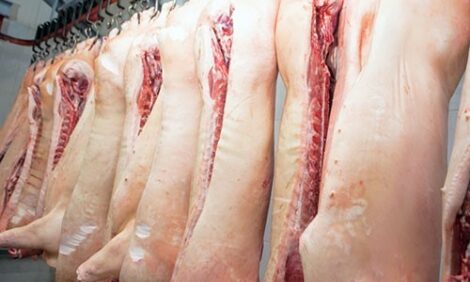



US Beef and Pork Exports Grew in 2011
US - Beef exports and foreign markets have always been of interest to the cattle industry, but the growth of beef export volumes and over the past two years has fuelled anticipation of substantial demand growth in coming years, writes Shane Ellis in the December Iowa Farm Outlook.The prospect of new customers, and growing appetites among existing customers, is sure to build an exciting outlook for any industry, but perhaps the uncertainty of unfamiliar foreign demand is what adds the element of positive suspense to the market.
In the first three quarters of this year US beef exports amounted to more than 2.1 billion pounds and were 27 per cent larger than export volumes during the same period a year ago.
Over 10 per cent of the beef produced in the US is now exported and the US is now a net exporter of beef. Year-todate exports to Japan, South Korea and Canada so far this year have grown by 100 million pounds each. With record high export volumes now, what else should we be aware of in the arena of exports?
Japan has recently changed their rule on the age of cattle from which beef can be shipped in to their country from the US. After BSE was discovered in the United States in late 2003, beef exports to Japan came to an abrupt and essentially complete halt for the next two years. Not until mid-2006, did shipments resume under a very tightly enforced rule that only meat from US cattle under 20-months of age would be eligible for import.
Based on a recent announced, this rule has been modified and the age restriction relaxed so that beef from cattle under 30-months of age may now be imported. This action will make a larger percentage of US beef eligible for that market.
However, it may also reduce the premiums and incentives of age verification programmes once used to qualify cattle for the Japanese market. Last year the US exported 351 million pounds of beef to Japan, and in the first three quarters of this year 348 million pounds, a 36 per cent from the same period last year.
South Korea is currently the fourth largest market for US beef but was the second largest customer to the US in 2003. Exports to the country more than doubled in 2010, and an additional 48 per cent increase emerging this year, with near 300 million pounds of beef entering that market in the first three quarter of this year.
Adding to the positive news is the US ratification of a free trade agreement (FTA) with Korea that has been on the works for more than four years. The treaty was signed in June 2007, agreements were finalised in December 2010, the US ratified the treaty in October 2011 and South Korea followed suit on 22 November.
Korea’s parliament was over-whelmingly in favor of the agreement, but that did not deter one of the few members in opposition from releasing a tear gas canister in their legislative chamber to disrupt the proceedings.
Remember this incident if ever US politics appear to be getting brutal. This FTA will result in an immediate or gradual phase out of tariffs on many US products including beef. The 40 per cent tariff on US beef will be phased out over the next 15 years.
Beef exports to Canada have also been growing. Year to date, Canada imported 380 million pounds and has become the largest foreign market for US beef. It overtakes Mexico for the top destination after large importation during July and August.
Part of the driving force behind exports to is a 10 percent reduction in Canadian beef production this year. While that seems a dramatic drop in production, the USDA has forecasted a five per cent reduction in US beef production in 2012.
Exports to Mexico remain fairly constant with only a one per cent increase. Other smaller but perhaps emerging markets include Hong Kong up 55 per cent and Russia up 83 per cent from last year.
What has yet to be seen is how exports and domestic markets will react to significantly reduced supply of beef in the coming year. In the tug-of-war among demanding consumers there will be some markets that will reduce the quantity of beef they utilise.

Pork exports have also grown faster than expected. Exports to Asian markets are growing and the free trade agreement with South Korea will only help to improve exports in the future.
Total pork exports are up 21 per cent during the first three quarters of the year. Exports to South Korea are up 129 per cent from last year, exports to Canada and Japan are both up about 16 and 14 per cent respectively, but exports to Mexico have been basically steady from last year.
Figure 2 contains the annual pork exports from recent years and the coming two years. Pork supplies are not expected to change dramatically in the first half of next years, but market hog numbers in the fourth quarter are expected to incrementally increase again in the next year.

Further Reading
| - | You can view the full report by clicking here. |








